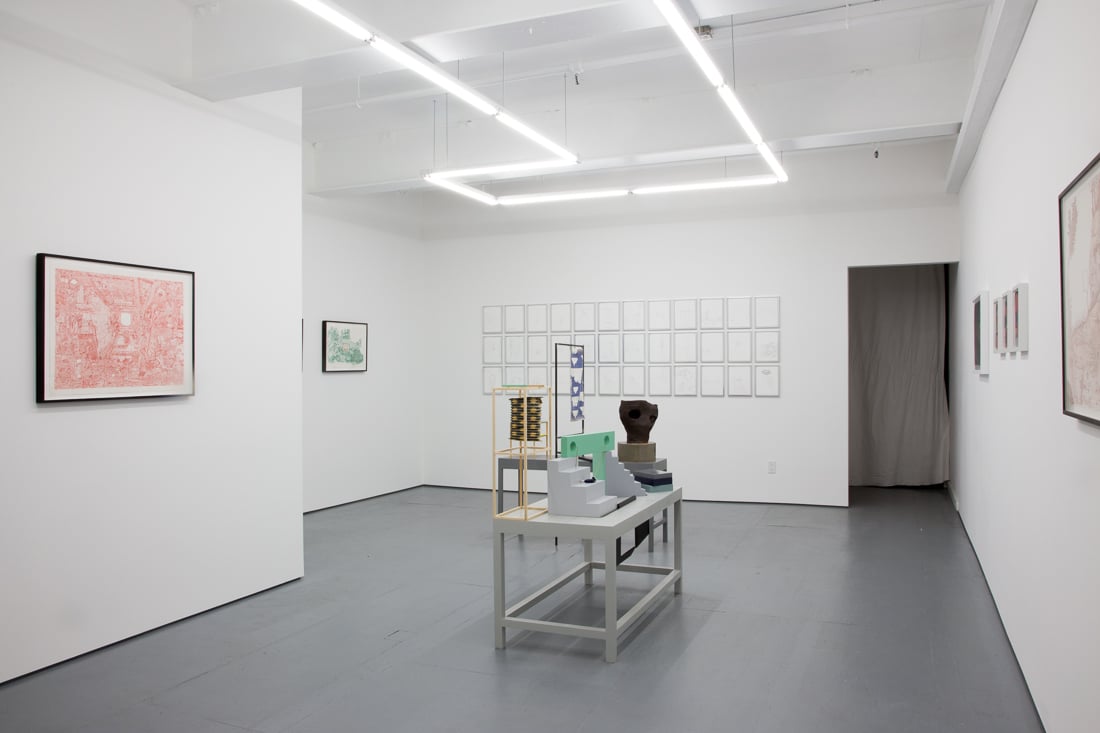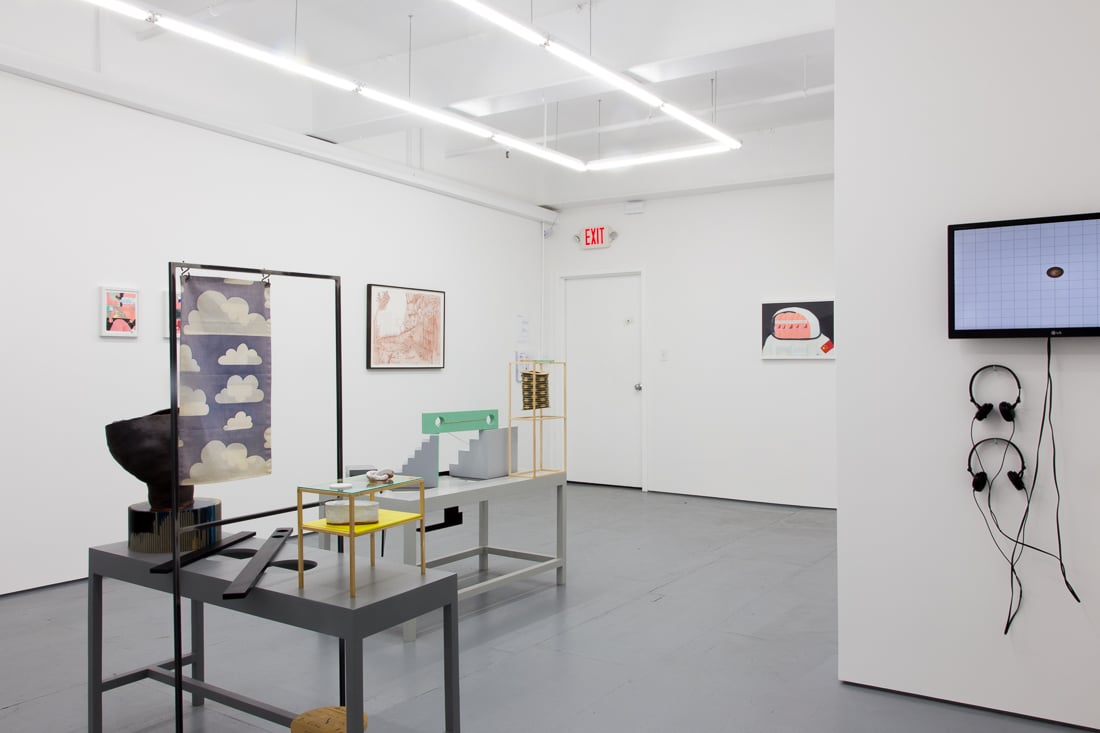"Stupid Cartoons to Pass the Time in the Desert"
JOEY PARLETT • STEPHANIE SNIDER • ADAM DOUGLAS THOMPSON • CRYS YIN
January 8 - February 14, 2016
Opening Reception: Friday January 8, 6 - 9pm
“Don’t have the hubris of being the comedian. You are the straight man in this farce; the universe is the funny man.” — Lars Iyer, from Nude in Your Hot Tub, Facing the Abyss: A Literary Manifesto After the End of Literature and Manifestos.
In comics, the passing of time is rendered as a passage through space. We start at the top of the page, and unless otherwise directed, arrive at the bottom of the page at a later moment, both literally and figuratively. For the artists in this show, all working in variously representational modes, this spatialization of time is reflected in a focus on space itself, whether literally as in the theatrical structures of Stephanie Snider, or more metaphorically, as in the drawings of Adam Douglas Thompson, in which the preponderance of white space serves to isolate each of his images within an atemporal flow.
These artists share an interest in representation and the narratives that can be implied by an accumulation of representations, yet they are interested less in the creation of story than in the creation and navigation of space. Comedy, whether physical and slapstick as in the work of Crys Yin, or more deadpan, as in Joey Parlett's seemingly perverse focus on the Desert part of Bellini's Saint Francis in the Desert, is manifest in an interest in figures not so much as human beings but as things contained and acted on by the world around them.
Joey Parlett’s drawings after Giovanni Bellini's Saint Francis in the Desert take a cue from this painting, rich with signifiers in the landscape that link the saint to earlier moments in the history of Christianity, and disregard Francis himself. Instead, Parlett focuses on the landscape, drawing associations between Francis's setting and accoutrements and analogous contemporary objects and spaces, furthering the echo of events through time implicit in the original painting, but as a means of considering material life in our present.
Stephanie Snider’s sculptures create spaces of imaginary action. Composed of half-functional tabletops and elements which are uncannily almost but not quite right, such as staircases to nowhere and shadows made physically manifest, they function as stage sets that simultaneously overdetermine and withhold the actions they ask (but don't ask) us to imagine. These hypothetical spaces ask us as viewers to project ourselves into them in order to grasp the internal logic which guides their construction.
In Adam Douglas Thompson’s work, each drawing is an instantiation of an idea, spatially related as in a comic, but connected by an associative logic which, while returning to themes of transformation and recontextualization, almost defies one to tell a story. As we look from drawing to drawing, connections are made, but just as likely severed as we continue our viewing. This spatial movement as a sign and substitute for temporal movement is elaborated in his animation An Education, which tours the viewer through a kind of life cycle in the manner of an unusually relaxed firstperson shooter.
In Crys Yin’s work, bodies are locations for play and investigation. Eyeballs are brushed, armpits flossed, and toes combed, by inquisitive figures who are distinguished by their multiple eyes, and, as we see in such works as Space is Lonely, their overwhelming desire to be physically near to one another. In these paintings, bodies obscure the places in which they exist, and the figure is rendered as a kind of landscape, acting on itself.




























